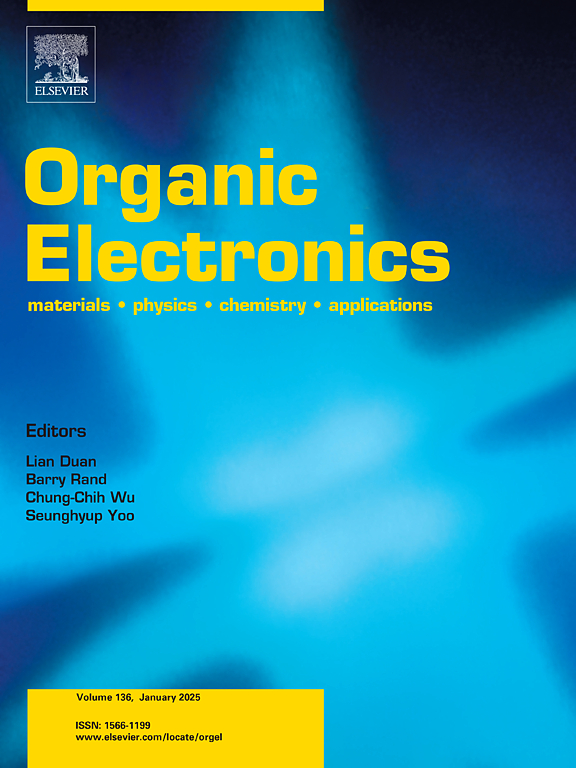Flexible electrically erasable nonvolatile organic memory utilizing a solution-processed transparent polyethylene oxide: PCBM blend film
IF 2.6
4区 工程技术
Q3 MATERIALS SCIENCE, MULTIDISCIPLINARY
引用次数: 0
Abstract
Organic flexible transparent electrically erasable nonvolatile memory presents significant potential for integration into bendable, stretchable, and transparent electronic devices. This capability unlocks a broad spectrum of potential applications in various fields, including wearable devices, medical equipment, and smart buildings. Polyethylene oxide (PEO) is a promising candidate for these devices due to its broad band gap, mechanical flexibility, chemical and thermal stability, water solubility, biocompatibility, and low cost. This study demonstrates a flexible transparent nonvolatile memory device utilizing a PEO and fullerene blend film. The average transmittance of the PET/ITO/PEO:PC61BM multilayer stack exceeds 86% in the optically visible range from 380 nm to 800 nm. The PET/ITO/PEO:PC61BM/Al device exhibits typical nonvolatile memory behavior, with the maximum electrical ON/OFF state ratio exceeding 103. Furthermore, retention tests for both ON and OFF states, along with bending cycle measurements and Write-Read-Erase-Read cycle endurance tests, indicate that the device remains stable under ambient conditions. The electrical conduction transition mechanisms are attributed to the formation of carbon filaments by PCBM aggregates.

柔性电擦除非易失性有机存储器,利用溶液处理的透明聚乙烯氧化物:PCBM混合薄膜
有机柔性透明电可擦除非易失性存储器在集成到可弯曲、可拉伸和透明电子器件方面具有重要的潜力。这一功能开启了各种领域的广泛潜在应用,包括可穿戴设备、医疗设备和智能建筑。聚乙烯氧化物(PEO)由于其宽带隙、机械灵活性、化学和热稳定性、水溶性、生物相容性和低成本而成为这些器件的有希望的候选者。本研究展示了一种利用PEO和富勒烯混合薄膜的柔性透明非易失性存储器件。在380 ~ 800 nm的可见光范围内,PET/ITO/PEO:PC61BM多层堆叠的平均透过率超过86%。PET/ITO/PEO:PC61BM/Al器件表现出典型的非易失性存储器行为,最大电开/关状态比超过103。此外,ON和OFF状态的保持测试,以及弯曲循环测量和写-读-擦-读循环耐久性测试表明,该设备在环境条件下保持稳定。电传导过渡机制归因于聚氯丁基聚合物聚集体形成碳丝。
本文章由计算机程序翻译,如有差异,请以英文原文为准。
求助全文
约1分钟内获得全文
求助全文
来源期刊

Organic Electronics
工程技术-材料科学:综合
CiteScore
6.60
自引率
6.20%
发文量
238
审稿时长
44 days
期刊介绍:
Organic Electronics is a journal whose primary interdisciplinary focus is on materials and phenomena related to organic devices such as light emitting diodes, thin film transistors, photovoltaic cells, sensors, memories, etc.
Papers suitable for publication in this journal cover such topics as photoconductive and electronic properties of organic materials, thin film structures and characterization in the context of organic devices, charge and exciton transport, organic electronic and optoelectronic devices.
 求助内容:
求助内容: 应助结果提醒方式:
应助结果提醒方式:


